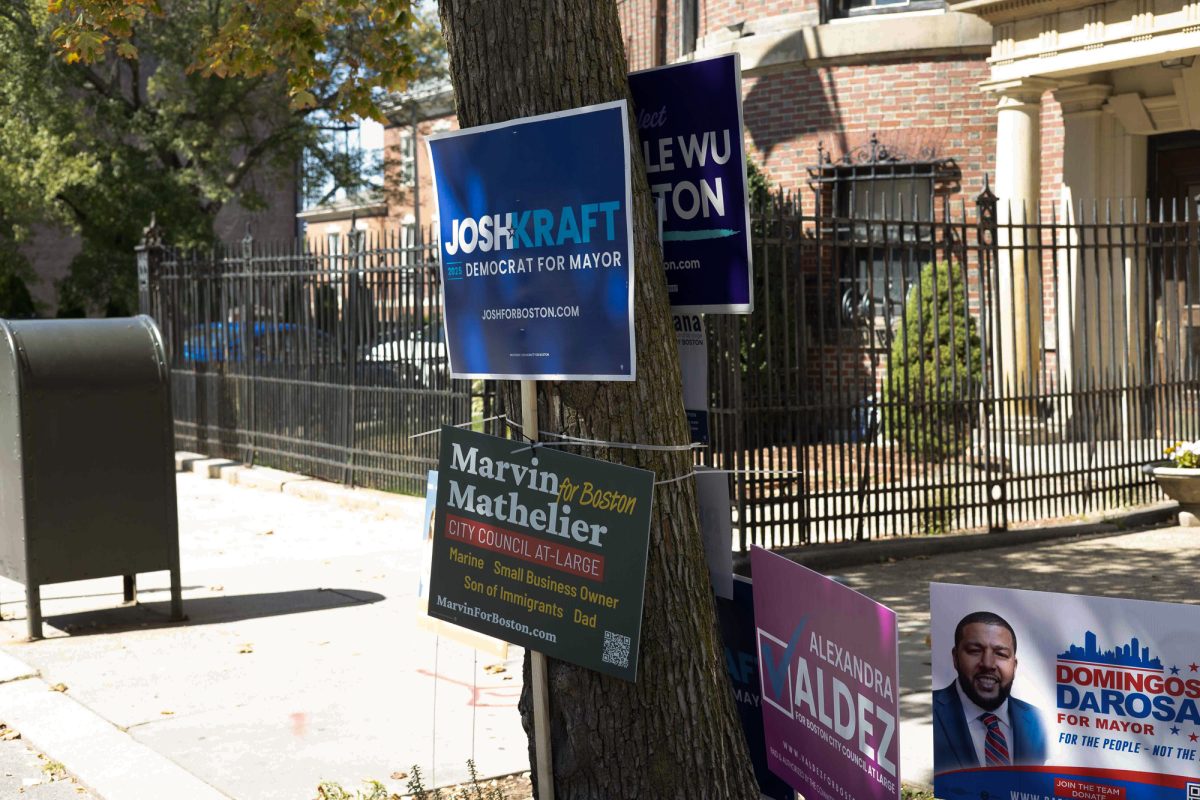
After a night of celebrating with friends, Sarah Brattain, a senior in the College of Arts & Sciences knew she had too much to drink and asked a friend to walk her home. She went straight to bed and assumed she was safe, but she woke up to find an unwelcome guest in her room.
“I woke up to one of my friends in my bed. I had not seen him that night at all. His hands were in my pants, and he was touching me,” she said. “I was panicking because the last thing I remembered was walking home, making the conscience decision to come home because I knew that I had had too much to drink.”
The man in her bed was no stranger to Brattain. The pair had been friends for almost four years. He always got too close, she said, but he seemed harmless. While she always had her guard up, she never expected things to escalate the way they did.
“I went to the hospital the next day to get the rape kit done because I didn’t know what had happened,” she said. “He basically shrugged it off and said ‘I don’t know, I was drunk, too.’ He told me that he couldn’t sleep, and I looked really peaceful sleeping and so he just crawled in my bed when I was sleeping.”
Brattain’s story is not uncommon. Since she opened up about the incident, she has been contacted by almost 60 people, between the ages of 14 and 62 , who have experienced attempted or completed sexual assault.
At the beginning of each academic year, there is a heightened risk of sexual assault on college campuses, leading to the first six weeks of school being termed the “red zone.”
“It [the red zone] is often identified as the first six weeks of the semester. There are several time frames — four weeks, six weeks, two months — that have been looked at to attempt to identify when predators are more active and first-year students are more at risk of being sexually assaulted,” said Maureen Mahoney, director of Boston University’s Sexual Assault Response & Prevention Center, in an email. “These [time frames] are positive in terms of bringing awareness to campuses. But predatory behavior doesn’t have an expiration date.”
Tuesday marked the third week of “BU’s red zone.” All students should be cognizant of this high-risk period as they get settled into college life, Mahoney said.
“We think it is important to recognize that most students are assaulted by someone they know — a partner, a classmate, a friend or acquaintance, a co-worker, someone they’ve met at a party or social function,” she said.
SARP, a service established by BU to provide advocacy and assistance to students who have experienced trauma, opened in 2012 after there were several allegations of sexual assault from members of the BU men’s hockey team, which led to the arrest of two of their players.
In May, BU was placed on the U.S. Department of Education’s list of 55 colleges and schools under Title IX investigation for the alleged mishandling of a complaint that was filed October 2013.
“Since that time, the DOE has said there are Title IX complaints at additional schools, but also made clear that a complaint [or] investigation is not evidence of a violation,” said BU spokesman Colin Riley in an email.
About 1 in 5 women, or 1 in 71 men, reported being sexually assaulted in the United States in 2012, according to the U.S. Centers for Disease Control and Prevention. Nineteen percent of female college students have experienced sexual assaults or attempts, and a majority of these crimes are committed by friends or acquaintances, the CDC reports.
Gayle Jaffe, community engagement manager of the Boston Area Rape Crisis Center, said there are not only resources on college campuses, but also organizations in the city of Boston to help those who have been assaulted and educate others in order to prevent sexual attacks.
“BARCC’s mission is really to support survivors of sexual assault and work to end sexual violence through healing actions and social change,” she said. “We’ve been partnering much more with campuses. The more we get involved with campuses and with student groups, the more that we are able to make people more aware of what kinds of services and resources we have to offer.”
Mahoney said it is important for students to be involved in the prevention process. SARP’s primary prevention program, “Step Up. Step In. BU.,” focuses on teaching students how to identify and intervene safely in certain high-risk situations.
Students often get carried away when they first come to college, Jaffe said, and are more vulnerable because they are in social situations they might not have experienced before.
“For many students, they are away from home for the first time. They don’t have parental involvement, so they’re out there. They’re on campus. They’re in a really new environment,” she said. “There’s a lot of alcohol that’s generally available, and it’s easier to have access to that alcohol. So many things are so new and students are really transitioning to this different life period.”
Irresponsible decisions can lead to students being in less safe situations, Jaffe said, such as walking home alone late at night, walking alone to a party and excessive alcohol consumption, which can lead to perpetrators taking advantage of the situation.
“Bystander intervention and just looking at changed attitudes and behaviors are really going to be the most effective ways of preventing sexual assaults from happening,” she said.
However, some people, much like Brattain, did follow the rules and avoided risky situations, but were unable to avoid sexual assault.
“All of the girls that I know who have been assaulted, they have all followed the rules,” she said. “[It] seems like it’s our job to protect ourselves, but that’s putting responsibility on us, rather than teaching men to respect boundaries. I don’t think following all the rules prevents rape. The biggest issue is just the culture we have where it’s a woman’s job to protect themselves.”
Brattain said her best advice would be to raise awareness about sexual assault and sexual assault prevention because “the more people talk about it, the more people take it seriously.”
“In a perfect world, you would have an escort everywhere, but really in a perfect world you wouldn’t have to worry about doing something as simple as walking home from the library at night.”
Several students said it is important for everyone to be aware of their surroundings and keep in mind their location in a big city.
Diego Davila, a sophomore in the College of Arts and Sciences, said he has not personally witnessed a person being sexually assaulted, but he has heard stories.
“To be honest, the whole college culture as a whole has contributed to the rape culture. When students first come to college, they’re learning to adjust to college’s social norms. If you’re new to being on your own, you’re less likely to know what’s normal and what is okay,” he said. “I don’t think BU does much to handle or even prevent the situation. It doesn’t seem like they do anything to the perpetrator.”
Caitlin O’Malley, a junior in CAS, said even though she has to remain vigilant, resources like SARP are comforting facets of BU.
“There have definitely been moments when I’m walking home late and I get nervous,” she said. “We’re in a city, on a campus where there are people who don’t necessarily go to our school walking down the street.”
Meredith Hauser, a sophomore in the Pardee School of Global Studies, said students’ own awareness is one of the greatest defenses against sexual assault.
“I could see how being in a city could make our school more dangerous, but I think Commonwealth Avenue is safer than other places I’ve been to,” she said. “I don’t really feel uncomfortable anymore, but people definitely need to be aware or their surroundings, especially at night or when they’re alone, which is something that I think people forget.”



















































































































